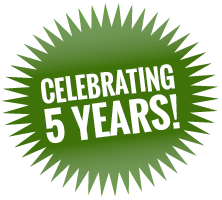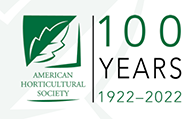Read by Matilda Longbottom

“Attention,” wrote the late poet Mary Oliver, “is the beginning of devotion.”
She meant that – in these easily distractable modern times – it’s all too easy not to notice what’s going on right under our noses. You can’t love what you don’t see. “One tree is like another, but not too much,” Oliver writes. “One tulip is like the next tulip, but not altogether.”
Which brings us to Louis Agassiz.
Louis Agassiz was a Swiss-born biologist/geologist, a towering name in science in the 19th century, and the founder of Harvard’s Museum of Comparative Zoology, which he presided over from 1859 until his death in 1873. He was famous for some clever work on glaciers – a glacial lake, six mountains, and two glaciers are named after him, as well as a headland in Antarctica, a crater on Mars, and an asteroid. He missed the boat on evolution – he was a lifelong opponent of Darwin – but he had a talent for popularizing science and the general public adored him. Henry Wadsworth Longfellow wrote a commemorative poem to celebrate his fiftieth birthday.
What Agassiz was really known for, however, was fish.
The story goes that he would routinely present his graduate students with a pickled fish, instructing them to look at it. The students, after ten minutes with the fish, figured they’d seen all there was to see, only to be told by Agassiz to look again. And again and again. Only after days of unrelenting fish observation did the students begin to see what Agassiz wanted them to see: the unique features and complexities of the fish.
After which Agassiz trotted out…another fish.
Samuel Scudder, the student who left behind the most compelling description of the Agassiz fish experience, (He used words like “loathsome,” “wretched,” and “despair.”) became an entomologist; and there’s no telling how many others – as they moved into Day Two of looking at their fish – threw up their hands and decided on another career path altogether: say, English literature or maybe making chain-saw bears.
The point of the Agassiz exercise, though, is the importance paying attention, of learning to look. Most of us – while we may think we’re looking – aren’t really, which is what makes us such lousy eyewitnesses. And it turns out we’re particularly bad at looking at plants. There’s even a term for this phenomenon: plant blindness, coined by Elisabeth Schussler and James Wandersee, a pair of American botanists, in 1998. Those who suffer from it commonly exhibit a whole raft of neglectful anti-plant behaviors, among them showing no interest in plants, being unable to identify plants, believing that plants are inferior to animals, and failing to appreciate the essential role plants play in daily life.
That inferiority stipulation pulled me up short for a minute. I mean I think we can all agree that, in the larger scheme of things, plants are certainly as important as animals – without plants, after all, there would be no animals. It’s not like animals are running around making oxygen and holding up the food chain. On the other hand, if the house were on fire, I’d rescue the cat before the philodendron. Plant-blindness opponents refer to this sort of selfish behavior as zoochauvinism.
Plant blindness and zoochauvinism come with an environmental price. Animal species routinely rake in three times more funding than plants – and when it comes to both, prettiness is often a more pertinent funding factor than environmental impact or extinction risk. In the competition for cold cash, if you’re an animal, you’re better off as a panda than a purple-nosed pig frog; and if you’re a plant, as an orchid than practically anything.
Plant blindness is not only a public, but a personal, loss. In the average field or forest, what most of us see is an undifferentiated mass of green. We’re generally good at identifying animals – without blinking an eye, we can zero in on a visiting deer, fox, turkey, or chipmunk – but we’re a lot shakier when it comes to picking out chickweed, chicory, creeping buttercup, and all those 400 different kinds of willows. We see fields, but not grasses; forests, but not trees.
Part of this, researchers guess, is the plants’ own fault. If you’re stuck in one place and don’t want to be eaten, a good strategy is not to call attention to yourself – perhaps by blending into the background and looking as much like your nondescript green neighbors as possible. Sometimes being one of the herd is a survival mechanism. There’s a reason zebras all look alike.
But a good chunk of the plant-blindness problem is on us.
In colleges and universities, botany classes are now on the decline. Nobody’s much interested in whole plants – the leafy kind – anymore; these days we’ve moved on to genetics, molecular biology, chemical analyses, and microscopes. One study of biology students found that only 14 percent could recognize more than three species of plants. Another showed that 83 percent of kids – ages 6 to 16 – couldn’t identify a bumblebee; 82 percent failed to recognize an oak leaf; and 42 percent didn’t know what a dandelion was.
This is a far cry from the Victorian era, the long-gone golden age of botany. Plant-collecting then was all the rage; botanical guide books were bestsellers. Teenagers pressed plant specimens in scrapbooks. Adults met to boast about their latest finds. Family parties, armed with tin boxes and magnifying glasses, headed for the hills in search of wildflowers and the woods in search of ferns. Those people knew how to look.
The thing is: everybody starts out plant blind. We have to learn to pay attention – and it’s worth it, because once we do, the world becomes a far richer place. A landscape, rather than an impressionist blur, snaps into focus as a multitude of idiosyncratic individuals. A field becomes home to Timothy grass, sweetgrass, alfalfa, New England aster, milkweed, black-eyed Susan, violet, goldenrod, bee balm, wild parsnip, yarrow, columbine, clover, and blackberry; a forest to sugar maple, red maple, poplar, beech, yellow birch, black birch, paper birch, box elder, and red oak.
How to begin? It’s easy. Think of Agassiz’s fish.
Pick a plant and look at it.
You’ve done that?
Now look at it again.
And again. ❖


 Previous
Previous



This whole article and Nick’s rendering are wonderful. Nick, you are a truly talented artist and the little girl you have done is a gorgeous, gorgeous child! I truly appreciate your art and all of the wonderful writers this website has to offer!